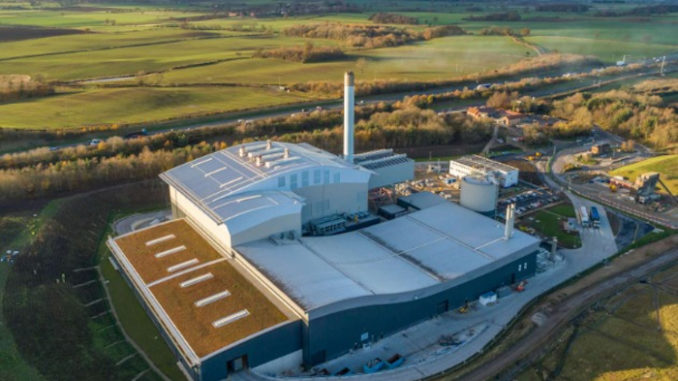
Five years after its launch, North Yorkshire and York’s hugely controversial £1.4bn billion energy from waste incinerator has been declared a success, including by community leaders who voted against it.
The towering Allerton Park plant, which has become a landmark beside the A1(M) near the Harrogate to York A59 junction, drew fierce opposition and High Court legal challenges after being declared the best solution to managing 320,000 tonnes of waste a year to improve green disposal methods and averting landfill costs.
Since the facility opened in 2018, Allerton Waste Recovery Park has continuously exceeded its 70 per cent target for diverting residents’ waste from landfill, achieving nearly 93 per cent last year.
However, the facility has never met the City of York and North Yorkshire council’s target of recycling five per cent of items in the general waste, only managing marginally more than two per cent for the first time last year.
Ahead of a meeting of North Yorkshire’s transport, environment and economy scrutiny commitee examining the plant’s performance, the authority’s executive member for waste management said the continued failure to hit the recycling target was partly caused by a positive reason.
Councillor Greg White said as residents separated high amounts of recyclable materials from their general waste relatively little material that was of sufficient quality to recycle was being left to mechanically separate at the plant.
He said overall the facility had proved a success, but needed to increase the amount of energy which could be extracted from general waste at the same time pressure was mounting from the government to have separate food waste collections.
The meeting heard Boroughbridge councillor Robert Windass claim missing the waste recycling target was due to “the idleness of people who live in the houses who cannot be bothered to put it in their recycling bins”.
Coun Windass, who went against his Conservative colleagues by voting against the facility as he did not believe the facility would be the best deal for taxpayers, said: “There were a lot of people in the community worried about pollution coming out of the chimneys, but there hasn’t been.”
Coun Windass said chairing a residents’ liaison committee with the site had been “a hell of a job to start with”, with people fearing the plant would impact on their quality of life and house prices.
He said: “It does work very well. Residents are much more relaxed about it now. The only complaint which we get is HGVs queuing on the road if they can’t get into the site.”
The scrutiny committee heard since the facility was launched it had dealt with more than 1.5 million tonnes of waste and saved 330,000 tonnes of carbon emissions, so it was having a positive impact.
The meeting heard the authorities were effectively incentivised not to educate residents more about what to recycle and for the council to provide as much waste as possible as it was paid by the site’s operator for it.
Councillors were told while processing waste from Derbyshire increased North Yorkshire’s carbon emissions at the site, efforts were underway to cut overall emissions from the site.
After the meeting, the authority’s leader, Councillor Carl Les, said: “I thought it was the right thing to do at the time and I still think it’s the right thing to do.
“People call it an incinerator, but it’s producing energy from waste. We should all adopt that hierachy reduce, recycle, re-use, but there comes a point where you can’t any further, so to get rid of the residual waste and generating energy I think is the right thing.
“I would now like to see some way of capturing the waste heat that is generated and capturing that and we are looking at partners to come next to site and use that heat.”


Be the first to comment